
- •Vector(-dy(psi),dx(psi)) zoom (-4,-4,8,8)as "flow shisleno" norm
- •Vector(-dy(psi),dx(psi)) zoom (-4,-4,8,8)as "flow shisleno" norm
- •Vector(-dy(psi),dx(psi)) zoom (-4,-4,8,8)as "flow shisleno" norm
- •Vector(-dy(psi),dx(psi)) zoom (-4,-4,8,8)as "flow shisleno" norm
- •Vector(-dy(psi),dx(psi)) zoom (-4,-4,8,8)as "flow shisleno" norm
- •Vector(-dy(psi),dx(psi)) zoom (-4,-4,8,8)as "flow shisleno" norm

Введение.
В данном курсе были изучены жидкость (газ) в виде двух простейших моделей:
Жидкость идеальная, т.е. отсутствует трение между слоями4
Жидкость вязкая (ньютоновская), т.е. трение между слоями пропорциональна скорости сдвига между слоями.
При изучении жидкости вводятся два понятия:
Сплошность - частицы жидкости заполняют весь объем сплошным образом без разрывов как самой жидкости, так и ее физических характеристик;
Текучесть – невозможно в состоянии покоя передать касательные напряжения (усилия) от одного слоя жидкости к последующим слоям.
Однако, существуют жидкости, в которых трение между слоями существует и в состоянии покоя – реологические жидкости.
Задание на лабораторную работу №1.
Составить компьютерные программы на языке «Flex PDE» для моделирования течения идеальной жидкости.
Поток идеальной жидкости.
Источник-сток.
Вихревая точка.
Вихреисточник.
Диполь.
Используя интеграл Бернулли-Эйлера, определить поле давлений во всех рассматриваемых случаях течения жидкости.
Выводы.
Численное решение плоской задачи течения идеальной жидкости, обусловленное пунктами 1-6, сводиться к решению уравнения Лапласа относительно ѱ.
Задание на лабораторную работу №2.
Постороить безиркуляционное и циркуляционное течение идеальной жидкости при обтекании цилиндра с помощью соответсвующего комплексного потенциала и математического комплекса «Flex PDE», определив при этом поле скоростей и поле давлений.
title "post. potok"
definitions
V0=staged(1,1.1,1.2,1.5,1.7,1.8,2,2.1,2.2,2.3,2.4,3,4,5)
ro=1
P0=(10-V0^2/2)*ro
psi = -V0*(x+20*y)
Vx=-dy(psi)
Vy=dx(psi)
V=sqrt(Vx^2+Vy^2)
P=(V0^2/2+P0/ro-V^2/2)*ro
far=5
Boundaries
region 1 { define the domain boundary }
start(-far,-far) { start at the lower left }
line to (far,-far) { walk the boundary Counter-Clockwise }
line to (far,far)
line to (-far,far)
line to close { return to close }
plots { write hardcopy files at termination }
!grid(x,y) zoom (-4,-4,8,8)
contour(psi) zoom (-4,-4,8,8) as "stream lines shisleno" { show the flow vectors: }
vector(-dy(psi),dx(psi)) zoom (-4,-4,8,8)as "flow shisleno" norm
contour(P) zoom (-4,-4,8,8) as "Davlenieshisleno" painted
surface(psi) zoom (-4,-4,8,8) as "stream lines"
elevation(P) from(0.001,0.001) to (3,3) report(P)
history(P) versus V0 as "P'
end

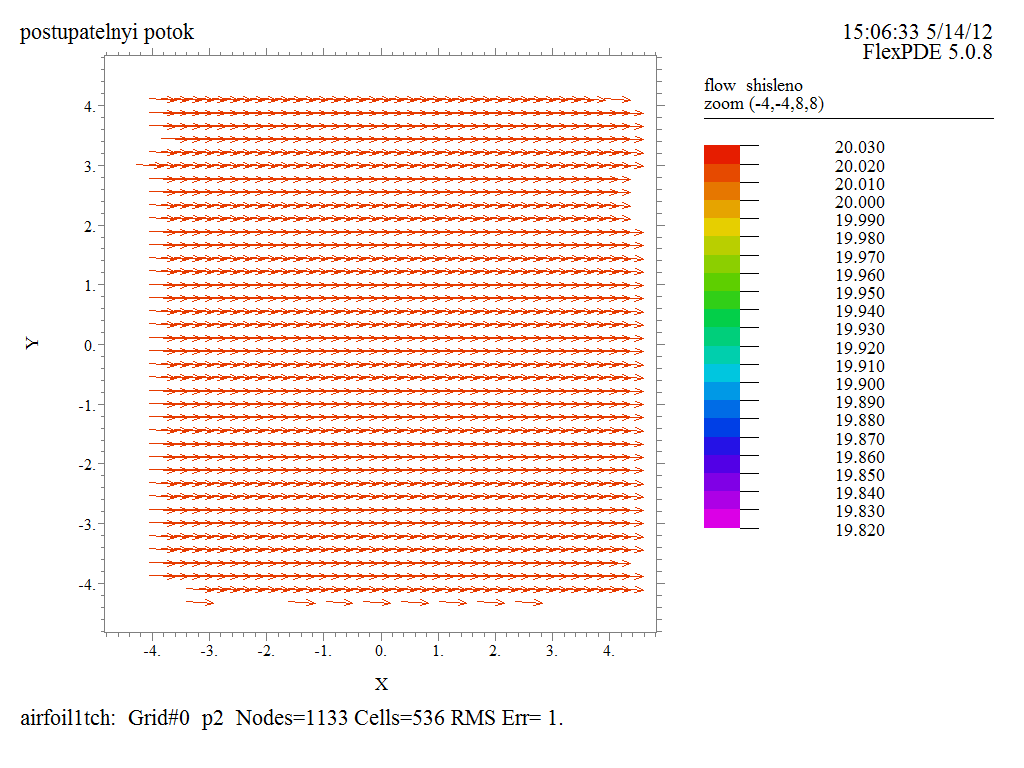

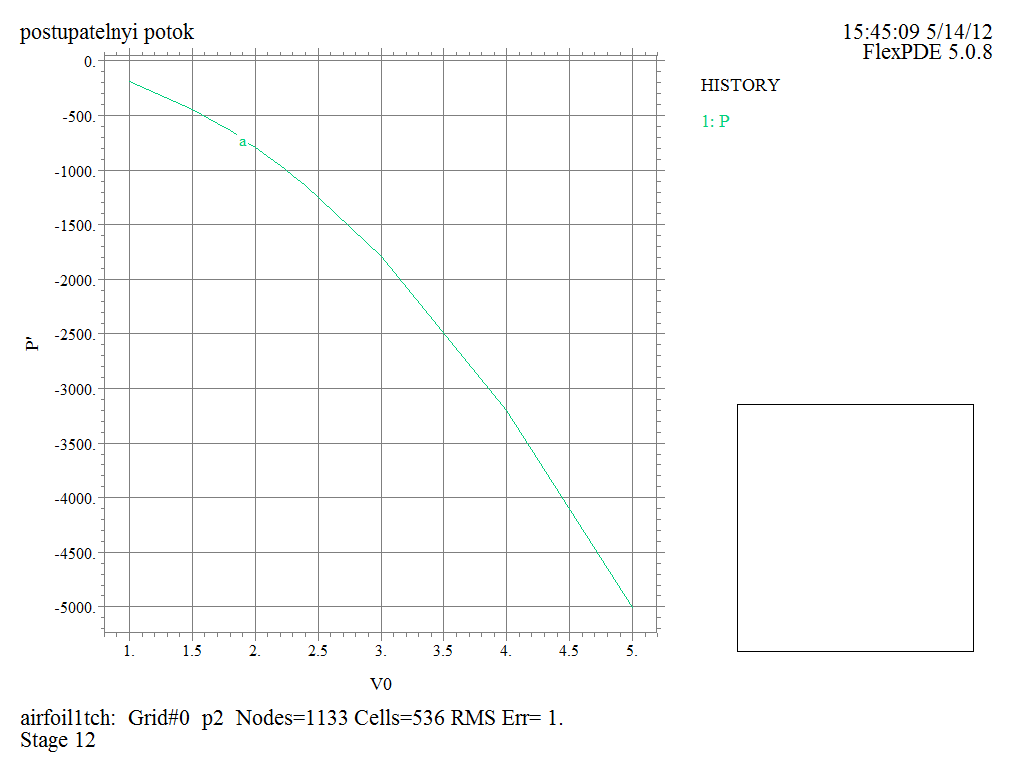
title "istochnik"
definitions
V0=staged(1,1.1,1.2,1.5,1.7,1.8,2,2.1,2.2,2.3,2.4,3,4,5)
ro=1
P0=(10-V0^2/2)*ro
psi = V0*arctan(y/x)
Vx=-dy(psi)
Vy=dx(psi)
V=sqrt(Vx^2+Vy^2)
P=(V0^2/2+P0/ro-V^2/2)*ro
far=5
Boundaries
region 1 { define the domain boundary }
start(-far,-far) { start at the lower left }
line to (far,-far) { walk the boundary Counter-Clockwise }
line to (far,far)
line to (-far,far)
line to close { return to close }
plots { write hardcopy files at termination }
!grid(x,y) zoom (-4,-4,8,8)
contour(psi) zoom (-4,-4,8,8) as "stream lines shisleno" { show the flow vectors: }
Vector(-dy(psi),dx(psi)) zoom (-4,-4,8,8)as "flow shisleno" norm
contour(P) zoom (-4,-4,8,8) as "Davlenieshisleno" painted
surface(psi) zoom (-4,-4,8,8) as "stream lines"
elevation(P) from(0.001,0.001) to (3,3) report(P)
history(P) versus V0 as "P'
end
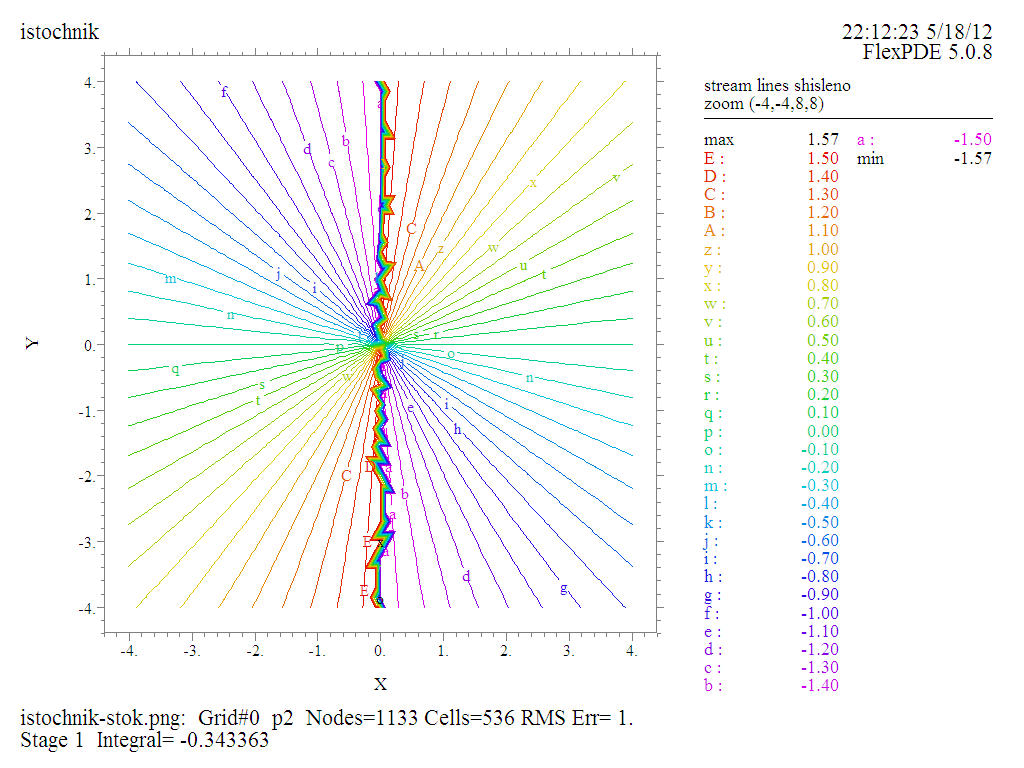
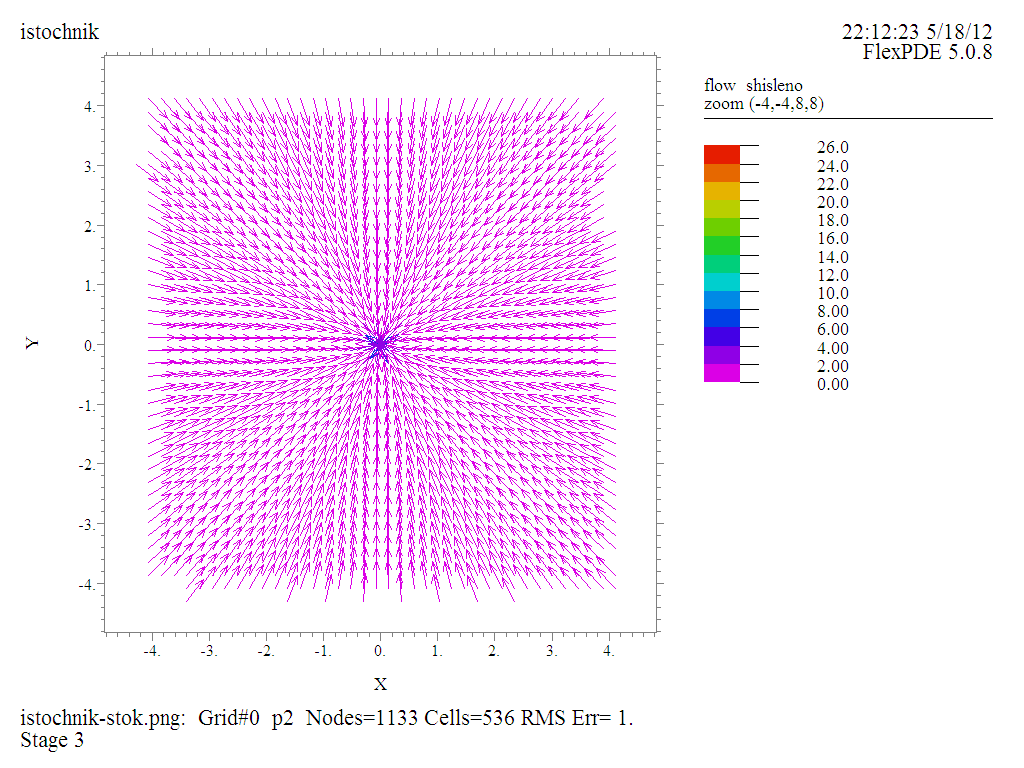
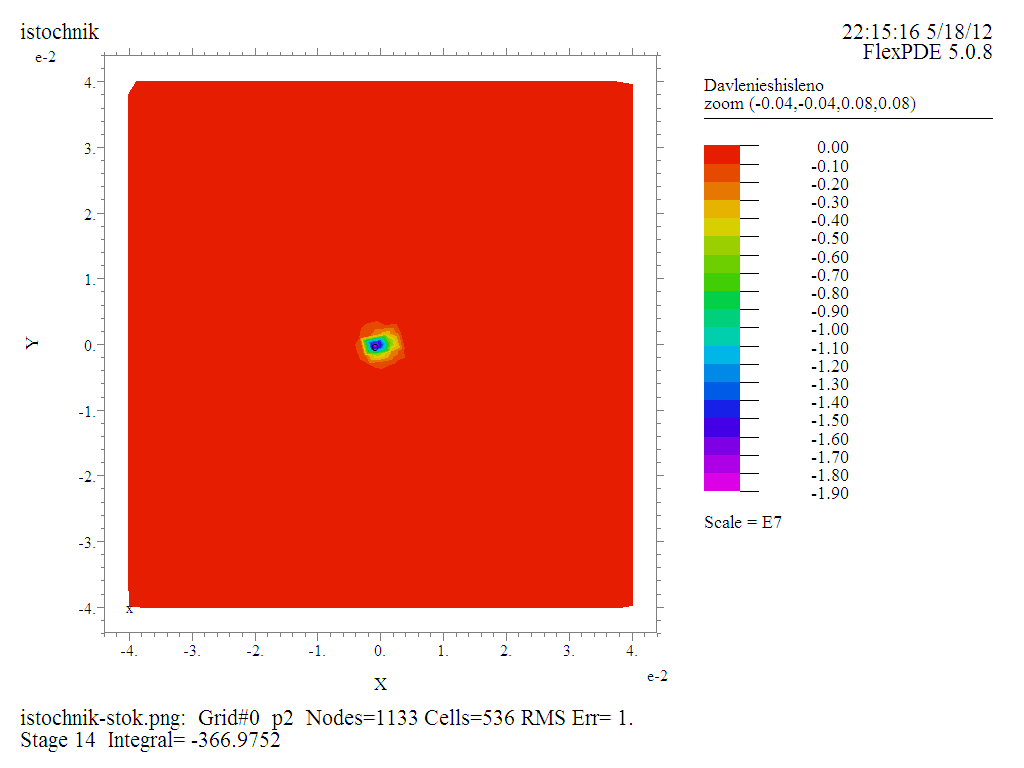
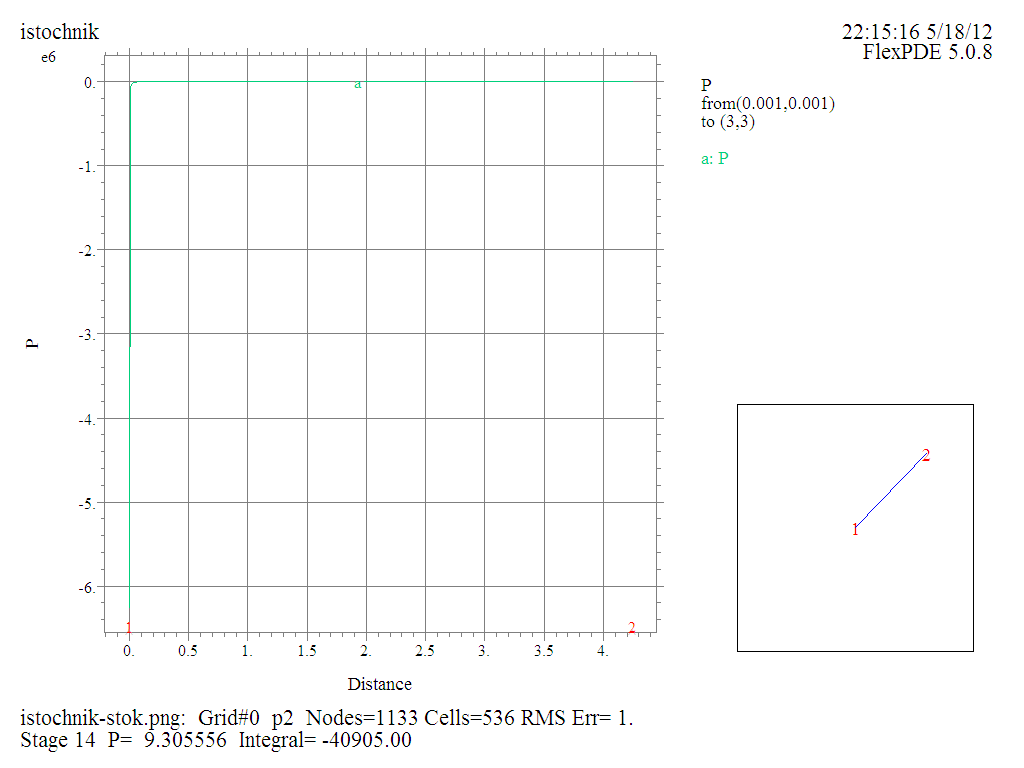
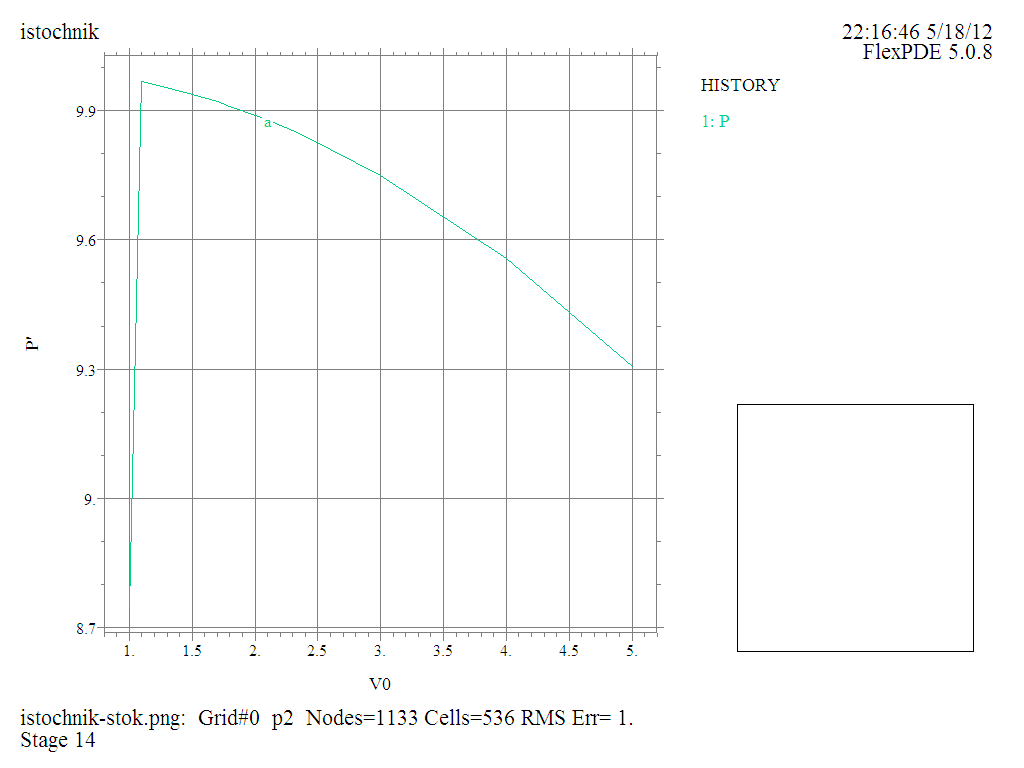
title "vihrevaya tochka"
definitions
V0=staged(1,1.1,1.2,1.5,1.7,1.8,2,2.1,2.2,2.3,2.4,3,4,5)
ro=1
P0=(10-V0^2/2)*ro
psi = V0*ln(r)
Vx=-dy(psi)
Vy=dx(psi)
V=sqrt(Vx^2+Vy^2)
P=(V0^2/2+P0/ro-V^2/2)*ro
far=5
Boundaries
region 1 { define the domain boundary }
start(-far,-far) { start at the lower left }
line to (far,-far) { walk the boundary Counter-Clockwise }
line to (far,far)
line to (-far,far)
line to close { return to close }
plots { write hardcopy files at termination }
!grid(x,y) zoom (-4,-4,8,8)
contour(psi) zoom (-4,-4,8,8) as "stream lines shisleno" { show the flow vectors: }
Vector(-dy(psi),dx(psi)) zoom (-4,-4,8,8)as "flow shisleno" norm
contour(P) zoom (-4,-4,8,8) as "Davlenieshisleno" painted
surface(psi) zoom (-4,-4,8,8) as "stream lines"
elevation(P) from(0.001,0.001) to (3,3) report(P)
history(P) versus V0 as "P'
end
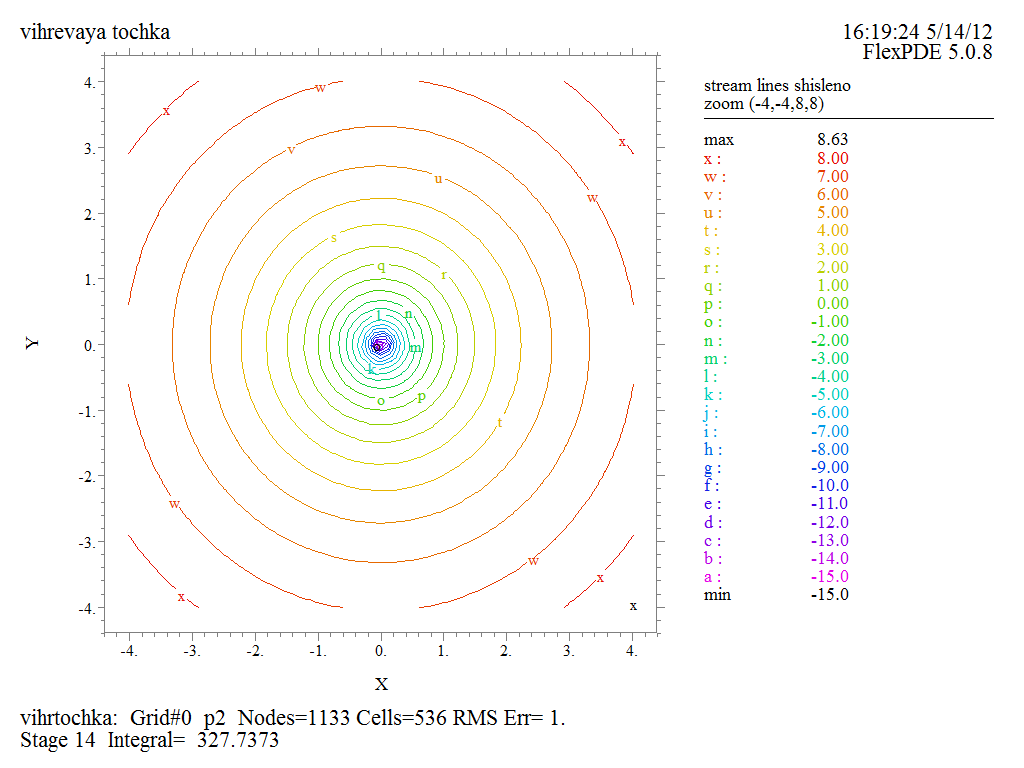
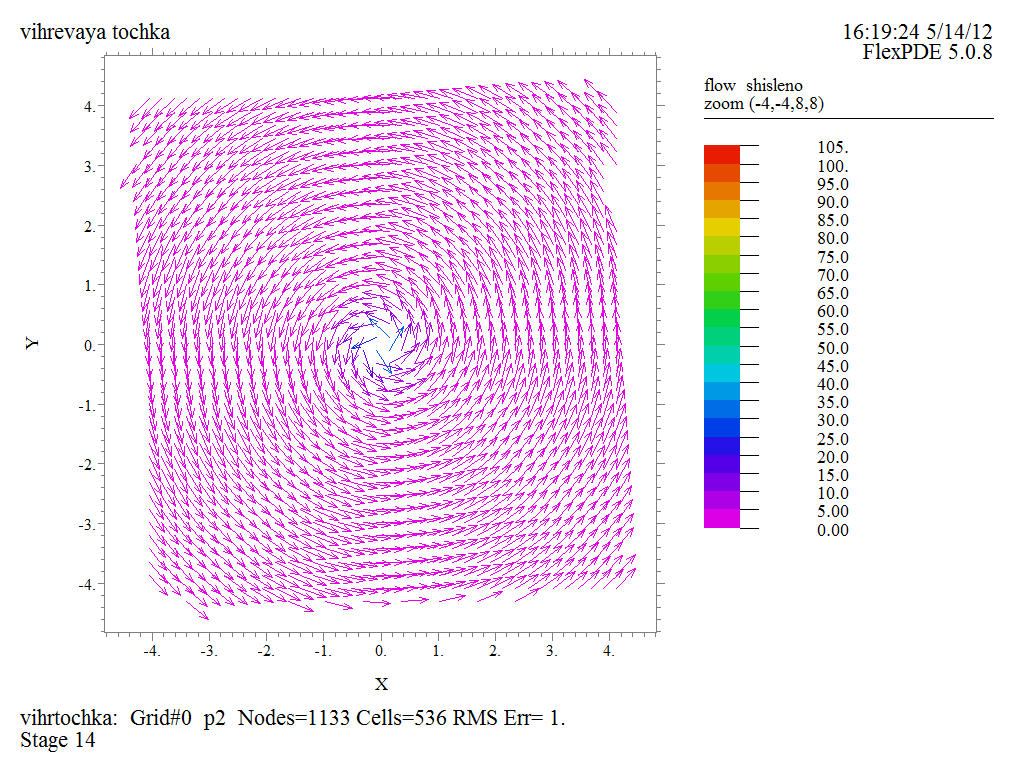
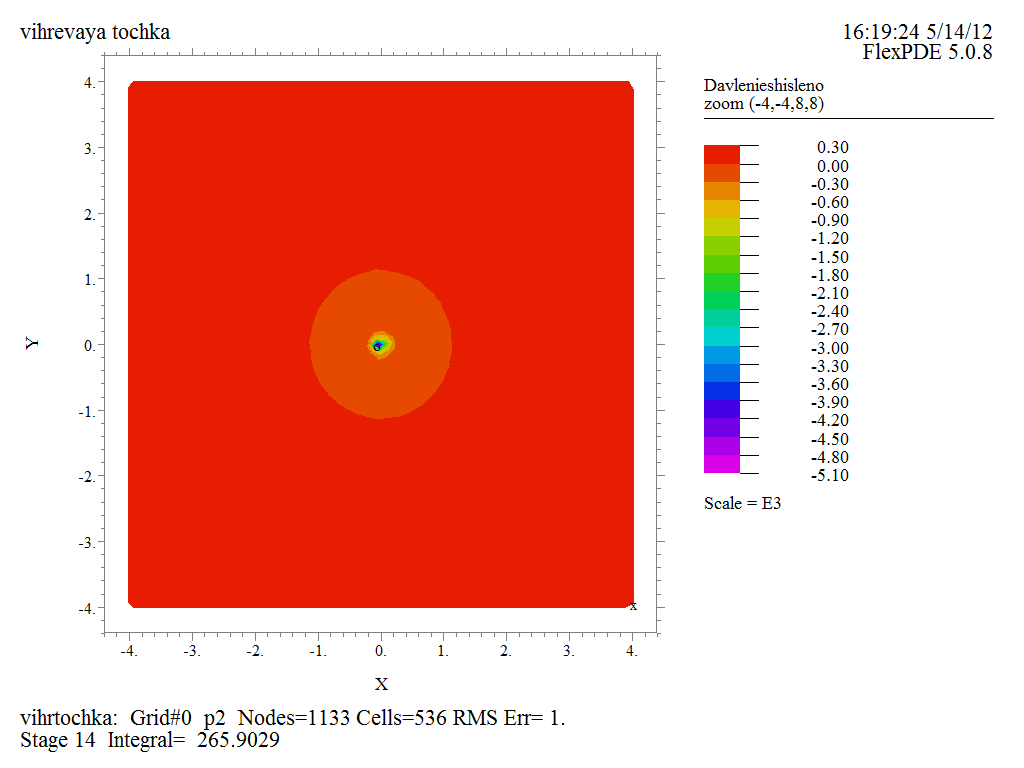

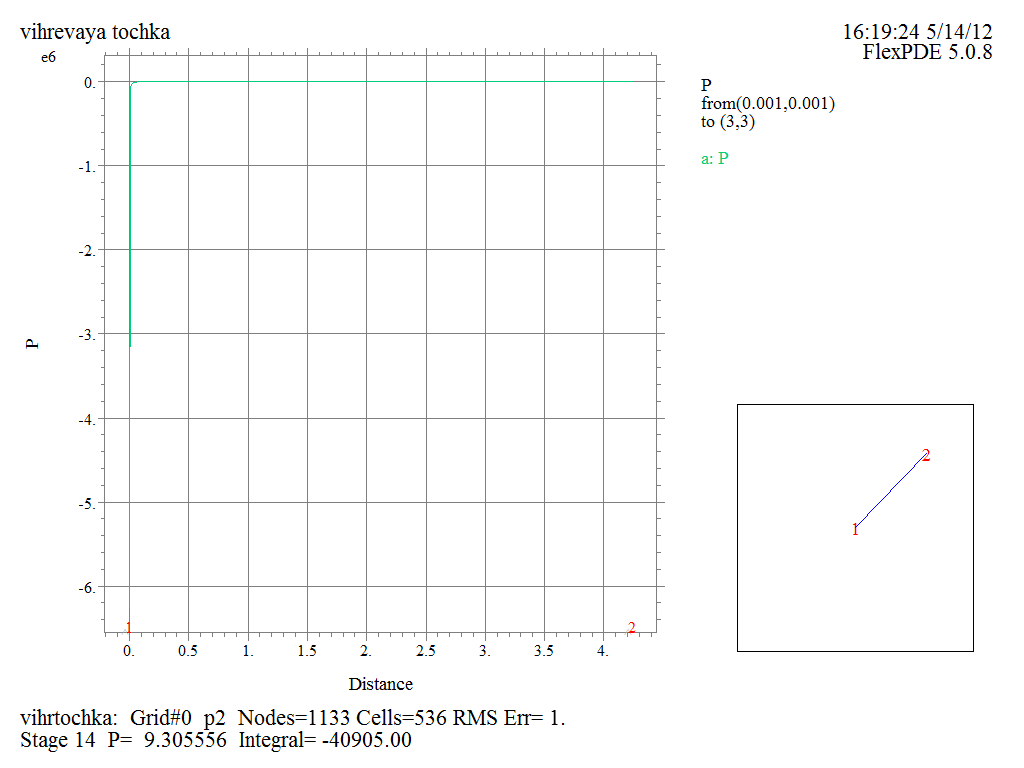
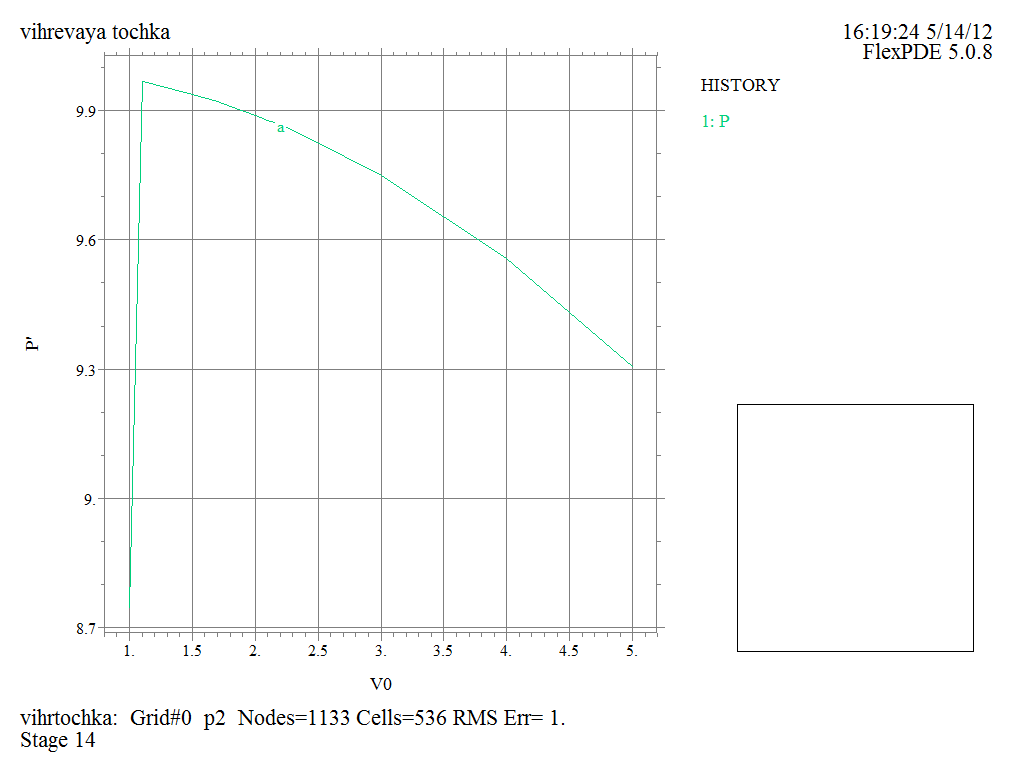
title "vihreistochnik"
definitions
V0=125!staged(1,1.1,1.2,1.5,1.7,1.8,2,2.1,2.2,2.3,2.4,3,4,5)
ro=1
Q=1!staged(1,1.1,1.2,1.5,1.7,1.8,2,2.1,2.2,2.3,2.4,3,4,5)
P0=(10-V0^2/2)*ro
psi = V0*(ln(r)-Q*arctan(y/x))
Vx=-dy(psi)
Vy=dx(psi)
V=sqrt(Vx^2+Vy^2)
P=(V0^2/2+P0/ro-V^2/2)*ro
far=5
Boundaries
region 1 { define the domain boundary }
start(-far,-far) { start at the lower left }
line to (far,-far) { walk the boundary Counter-Clockwise }
line to (far,far)
line to (-far,far)
line to close { return to close }
plots { write hardcopy files at termination }
!grid(x,y) zoom (-4,-4,8,8)
contour(psi) zoom (-4,-4,8,8) as "stream lines shisleno" { show the flow vectors: }
Vector(-dy(psi),dx(psi)) zoom (-4,-4,8,8)as "flow shisleno" norm
contour(P) zoom (-0.004,-0.004,0.008,0.008) as "Davlenieshisleno" painted
surface(psi) zoom (-0.004,-0.004,0.008,0.008) as "stream lines"
elevation(P) from(0.0001,0) to (0,0.004) report(P)
! history(P) versus Q as "P'
end
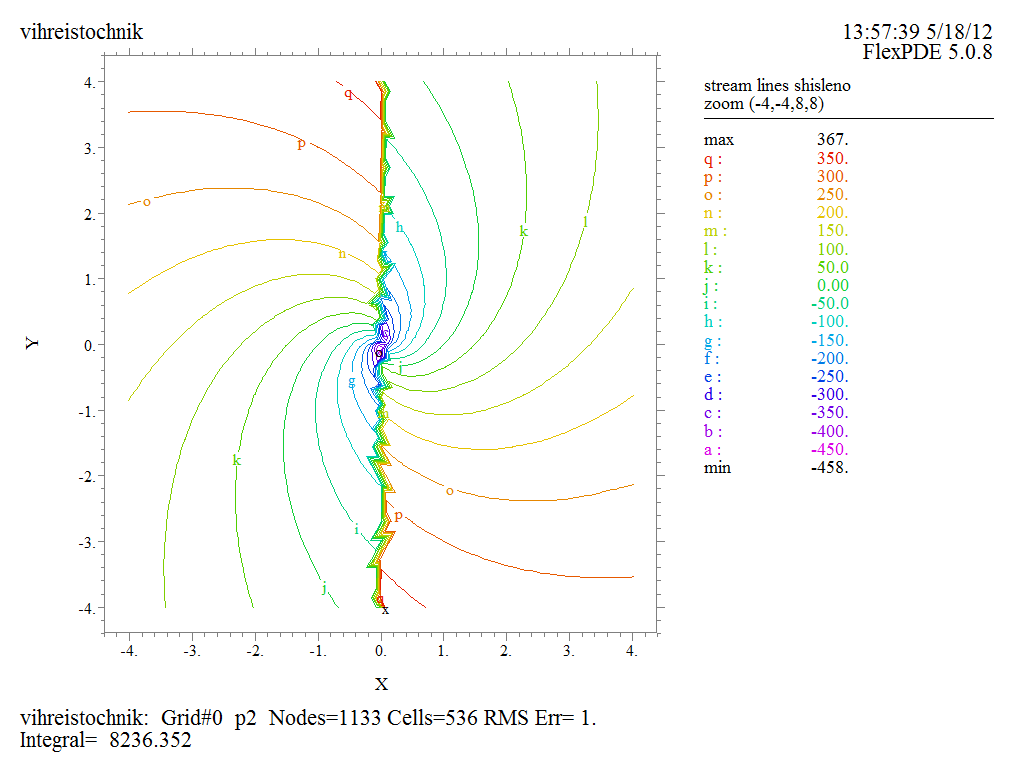


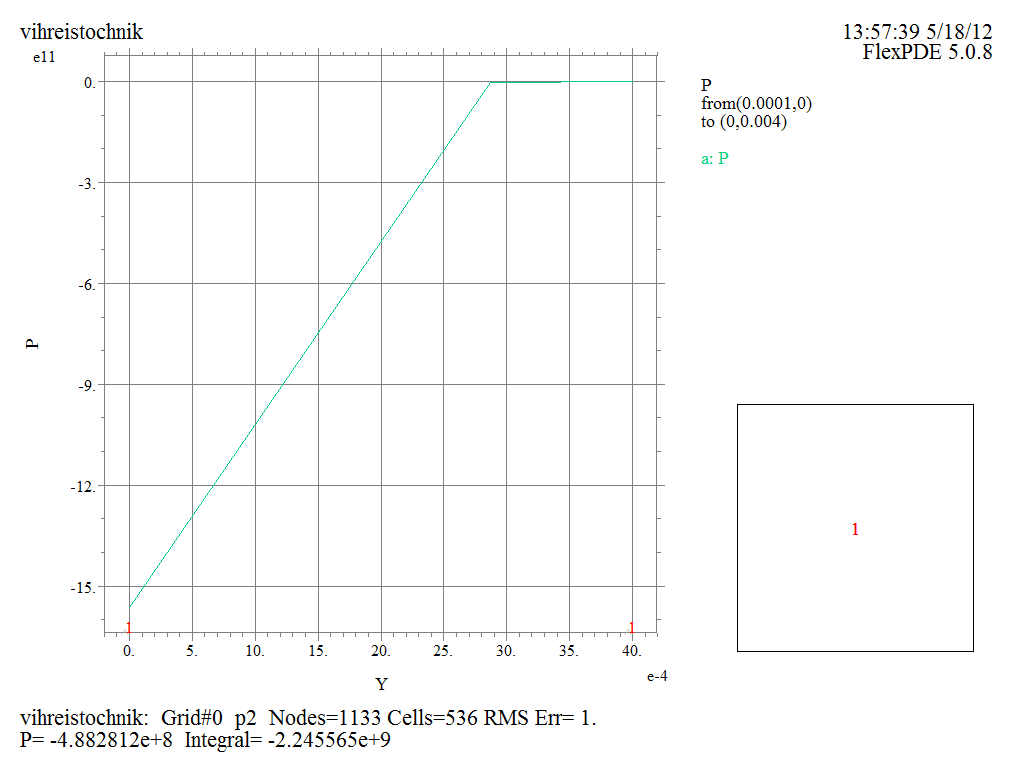
title "dipol"
definitions
V0=staged(1,1.1,1.2,1.5,1.7,1.8,2,2.1,2.2,2.3,2.4,3,4,5)
ro=1
P0=(10-V0^2/2)*ro
psi = -y/(x^2+y^2)
Vx=-dy(psi)
Vy=dx(psi)
V=sqrt(Vx^2+Vy^2)
P=(V0^2/2+P0/ro-V^2/2)*ro
far=5
Boundaries
region 1 { define the domain boundary }
start(-far,-far) { start at the lower left }
line to (far,-far) { walk the boundary Counter-Clockwise }
line to (far,far)
line to (-far,far)
line to close { return to close }
plots { write hardcopy files at termination }
!grid(x,y) zoom (-4,-4,8,8)
contour(psi) zoom (-0.04,-0.04,0.08,0.08) as "stream lines shisleno" { show the flow vectors: }
